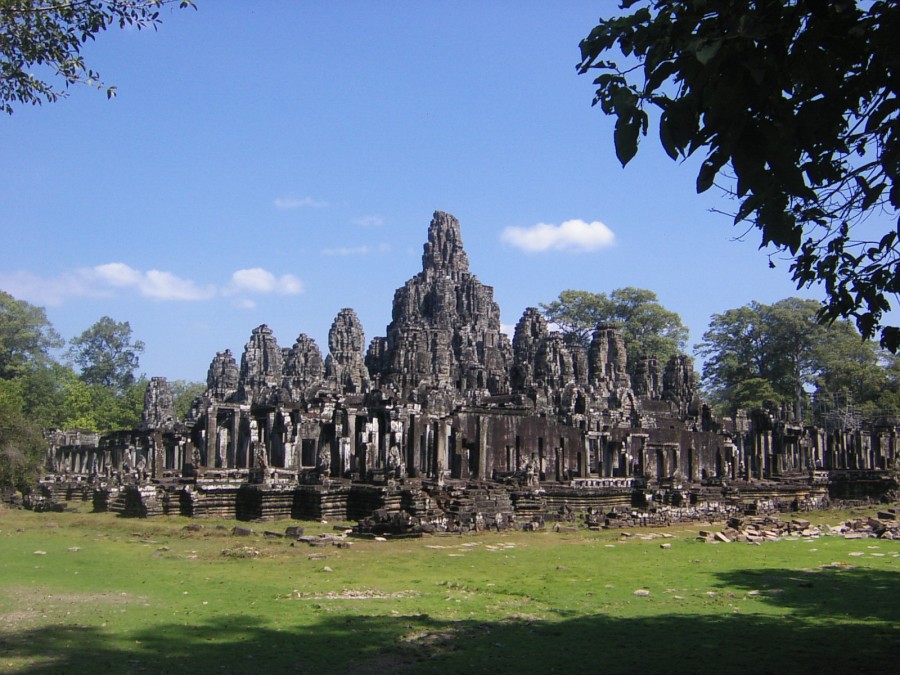
A few years back we visited Cambodia and I fell in love with a wonderful country with a heartbreakingly sad history. The people were gentle and welcoming. Our first stop was Siem Reap to visit the Angkor temple complex just outside the city. These amazing semi-ruined, stone constructions were built in the 12th century and two centuries later abandoned after a 7-month siege by the Thais. The ruins lay dormant in virtually impenetrable jungle until rediscovered by the western world in 1860.
My favourite temple was Ta Prohm, the setting for several scenes from the movie, The Tomb Raider. This sprawling, one-time Buddhist monastery is only partially cleared of jungle overgrowth. The roots of fig and sprong trees grow over its towers and walls, creating scenes of unparalleled structural beauty. Parrots squawked, doe-eyed children clambered to sell us postcards, cameras clicked, but none of this detracted from the mystical, other-worldly atmosphere in this temple where Angelina Jolie battled the bad guys.

The most famous temple is Angkor Wat, one of the wonders of the world. When we first saw it at sunrise, the pink blush of dawn blurred to amber, silhouetting the five lotus-like towers of Angkor Wat in a golden glow. A horse whinnied, mosquitoes whined and the excitement grew among the brave travellers who had ventured out at the ungodly hour of 5.30am.
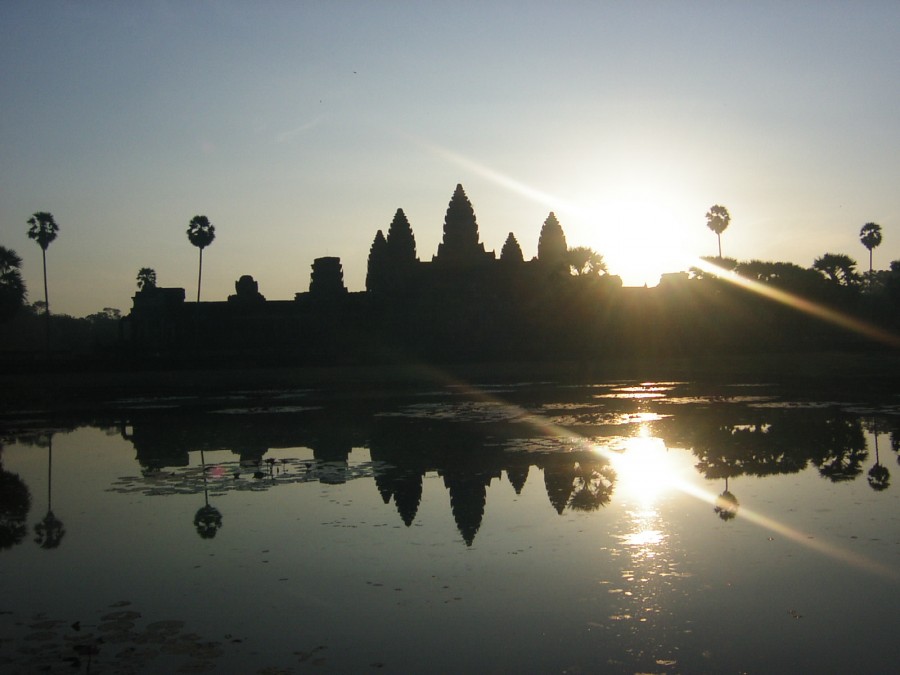
The perfect reflection of the sun in the water as it rose behind the temple was unmarred by crowds.Cambodiais still fresh and untarnished by overexposure to tourists. The word is only just getting out so now is the time to visit.
Once inside Angkor Wat, we wandered past intricate, bas-relief carvings, which ring the outer corridor of the building, telling the stories of two ofIndia’s greatest epic poems. Then up we went to the second level, where we discovered four ponds, now empty, once used for meditation.
Then came my personal challenge. If I wanted to visit the third level where the gods reside, I had to take my courage in both hands. Ahead, eleven metres of exceptionally narrow stone steps stretched before me, precariously angled at seventy degrees. But having come all this way, there was no chickening out.
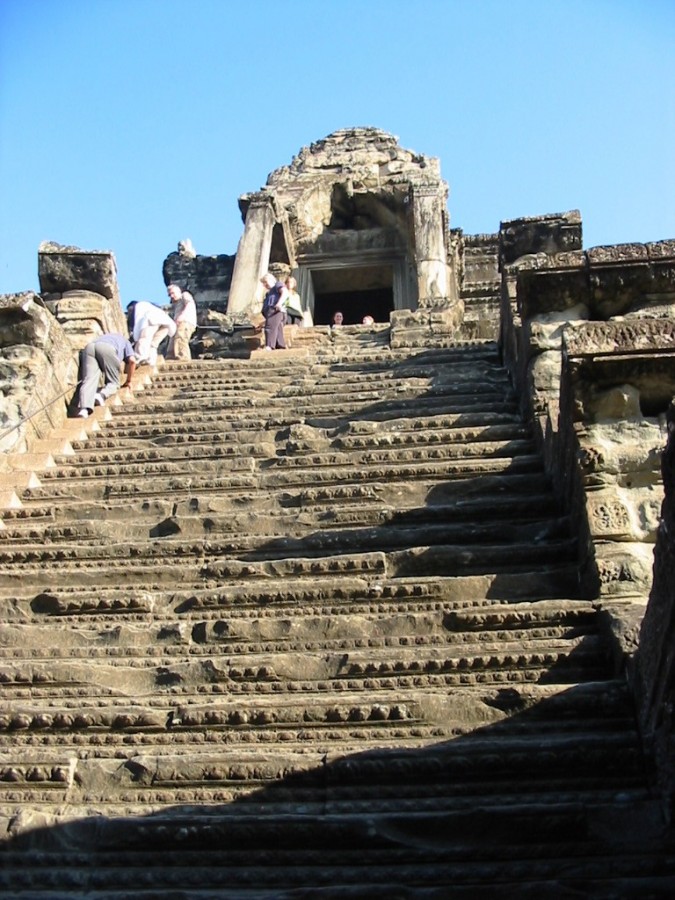
I clambered up on all fours and at the top – sweaty, muscles aching – took in the view and languished in the peaceful air.
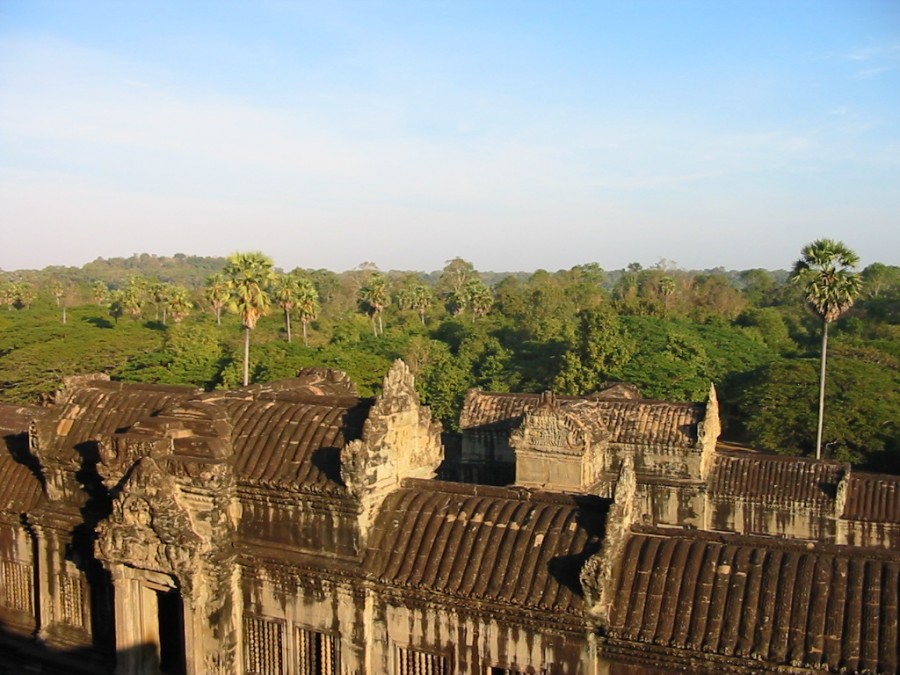
Then I made the mistake of looking down the steps. My head spun with vertigo at the steep drop. I had to go back down there and there was no choice. If I thought it required courage to go up, it took super human control to go back down – one step at a time, very carefully. A lesson was learned. Going up is easier than going down and once up, you have to descend.

This was a fabulous trip and one I won’t forget in a hurry. Believe me, Angkor Wat is the eighth wonder of the world.



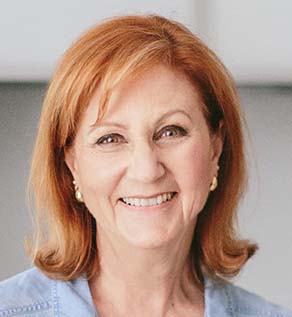
Angkor Wat is definitely on my bucket list…I just need to get hubby on board with traveling to Asia. Gorgeous photos!!!!
Do try to persuade him, Liz. The Asian countries I have visited have been amazing and the people are so friendly.
Suzanne
Hi Suzanne
I’m a fellow low fodmapper and am considering moving to Cambodia next year to teach English. How did you find the Khmer cuisine? Was it overly aggravating?
I went to Cambodia before I knew about the low Fodmap diet but I would say that there could be a few issues, unfortunately. I loved Cambodia so have a great time there. I taught English as a second language for about 13 years. It’s a great professional if you want to travel.
Thanks Suzanne. I am really wary of letting my IBS get in the way of my travel/ living abroad plans so I am worried about the local cuisine I will encounter. I guess the best thing to do is to try and let the chef’s know not to include things I can’t tolerate too well, avoid the dishes that can’t really be changed to suit me and prepare my own food as much as possible. Keeping up my probiotics will also be necessary.
How do you find travelling now?
The best idea is to make up a laminated card with the main things you can’t tolerate like garlic and onions and hand that to the wait staff to give to the chef at each place. Ask for it back, of course. You don’t need to include foods that you can see and pull out. It’s the invisible foods that need to be on the list. And always prepare your own food as often as possible. I travel well now but I always ask a lot of questions when eating out.